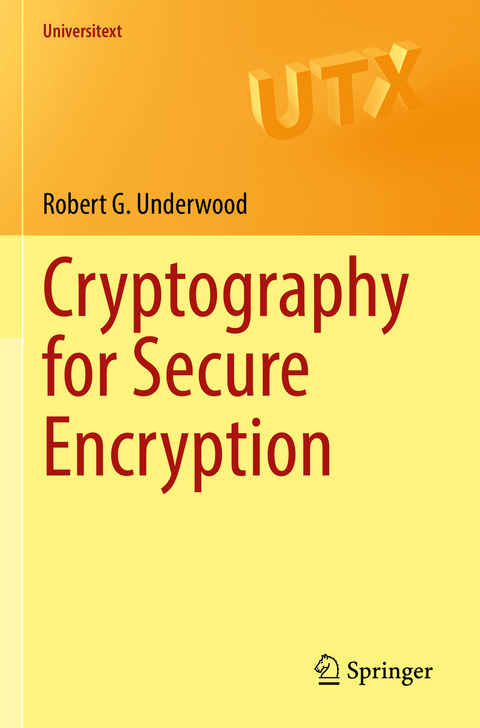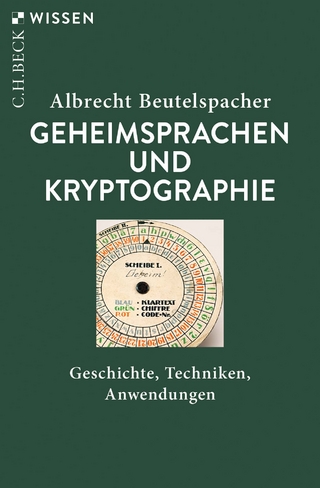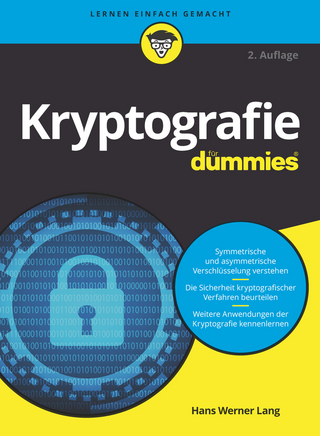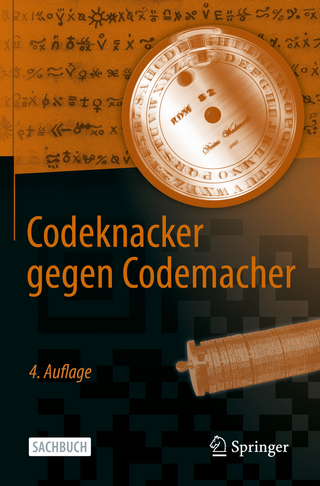
Cryptography for Secure Encryption
Springer International Publishing (Verlag)
978-3-030-97904-1 (ISBN)
This text is intended for a one-semester course in cryptography at the advanced undergraduate/Master's degree level. It is suitable for students from various STEM backgrounds, including engineering, mathematics, and computer science, and may also be attractive for researchers and professionals who want to learn the basics of cryptography. Advanced knowledge of computer science or mathematics (other than elementary programming skills) is not assumed. The book includes more material than can be covered in a single semester. The Preface provides a suggested outline for a single semester course, though instructors are encouraged to select their own topics to reflect their specific requirements and interests. Each chapter contains a set of carefully written exercises which prompts review of the material in the chapter and expands on the concepts. Throughout the book, problems are stated mathematically, then algorithms are devised to solve the problems. Students aretasked to write computer programs (in C++ or GAP) to implement the algorithms. The use of programming skills to solve practical problems adds extra value to the use of this text.
This book combines mathematical theory with practical applications to computer information systems. The fundamental concepts of classical and modern cryptography are discussed in relation to probability theory, complexity theory, modern algebra, and number theory. An overarching theme is cyber security: security of the cryptosystems and the key generation and distribution protocols, and methods of cryptanalysis (i.e., code breaking). It contains chapters on probability theory, information theory and entropy, complexity theory, and the algebraic and number theoretic foundations of cryptography. The book then reviews symmetric key cryptosystems, and discusses one-way trap door functions and public key cryptosystems including RSA and ElGamal. It containsa chapter on digital signature schemes, including material on message authentication and forgeries, and chapters on key generation and distribution. It contains a chapter on elliptic curve cryptography, including new material on the relationship between singular curves, algebraic groups and Hopf algebras.
Robert G. Underwood is a Professor in both the Department of Mathematics and the Department of Computer Science in the College of Sciences at Auburn University at Montgomery. His research in mathematics involves the classification of Hopf orders in group rings and the application of Hopf orders to Galois module theory. His interests in Computer Science include cryptography and automata theory, specifically, algebraic generalizations of the Myhill-Nerode theorem. Professor Underwood is the author of "Fundamentals of Hopf Algebras" and "An Introduction to Hopf Algebras."
1. Introduction to Cryptography.- 2. Introduction to Probability.- 3. Information Theory and Entropy.- 4. Introduction to Complexity Theory.- 5. Algebraic Foundations: Groups- 6. Algebraic Foundations: Rings and Fields.- 7. Advanced Topics in Algebra.- 8.Symmetric Key Cryptography.- 9. Public Key Cryptography.- 10. Digital Signature Schemes.- 11. Key Generation.- 12. Key Distribution.- 13. Elliptic Curves in Cryptography.- 14. Singular Curves.- 15. Bibliography.- Index.
"Each chapter contains a set of exercises of various degrees of difficulty that help summarize and review the main ideas of the chapter. The author finds that cryptographic algorithms and protocols provide good programming problems. In most of the places in the text, the author includes the GAP code for a better understanding of the subject in practical use. This book is self-contained and valuable to all audiences interested in cyber security subject." (Manish Kumar, zbMATH 1502.94004, 2023)
"One of the strengths of the book is the exercises. ... The exercises not only test the student's knowledge of the material in the chapter, but are fun to work on. ... Cryptography for Secure Encryption is an interesting theoretical book for mathematics and computer science students with solid backgrounds in mathematics. The exercises make the book very appealing." (Margaret B. Cozzens, MAA Reviews, January 29, 2023)| Erscheinungsdatum | 17.07.2022 |
|---|---|
| Reihe/Serie | Universitext |
| Zusatzinfo | XII, 319 p. 23 illus., 15 illus. in color. |
| Verlagsort | Cham |
| Sprache | englisch |
| Maße | 155 x 235 mm |
| Gewicht | 565 g |
| Themenwelt | Informatik ► Theorie / Studium ► Kryptologie |
| Mathematik / Informatik ► Mathematik ► Arithmetik / Zahlentheorie | |
| Mathematik / Informatik ► Mathematik ► Wahrscheinlichkeit / Kombinatorik | |
| Schlagworte | automatic sequences • Complexity theory • Cryptanalysis • cryptography • cyber security • Encryption • key generation • public key cryptosystem • symmetric key cryptosystem |
| ISBN-10 | 3-030-97904-0 / 3030979040 |
| ISBN-13 | 978-3-030-97904-1 / 9783030979041 |
| Zustand | Neuware |
| Haben Sie eine Frage zum Produkt? |
aus dem Bereich


